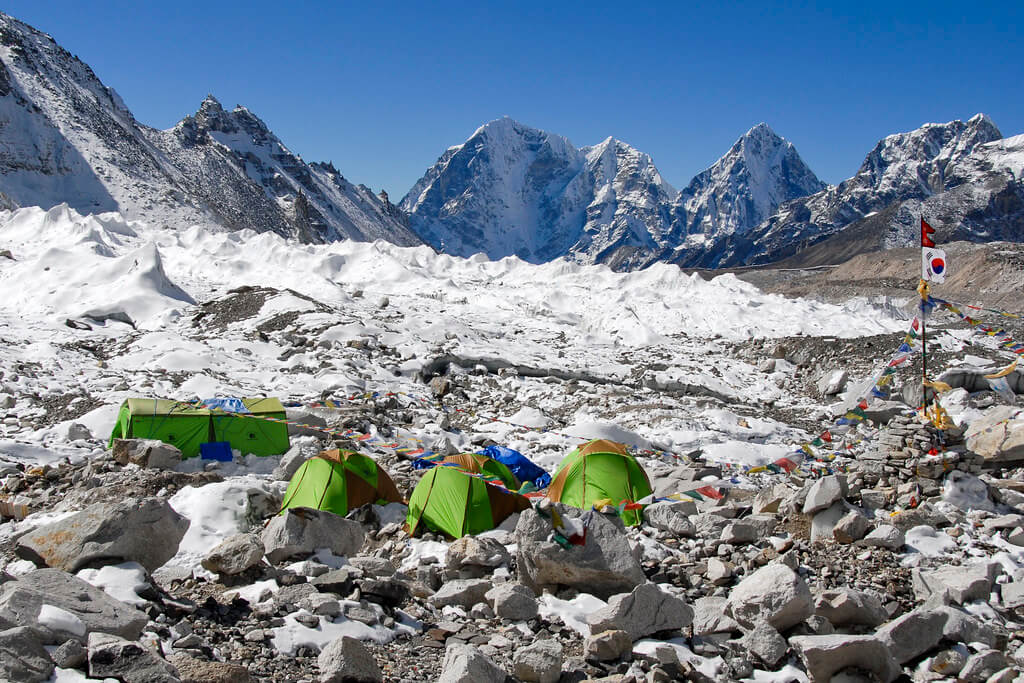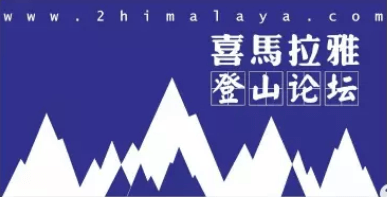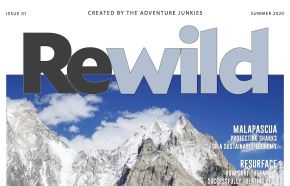General
Everest Base Camp Trek (2025-26)
The Everest Base Camp Trek is one of Nepal’s most thrilling and popular trekking holidays in the Himalayas. This Trek is a 16-day adventure to the base of Mount Everest. It is also the world’s tallest mountain, rising over 8800 meters above sea level.
Including our Everest Base Camp Trek, we offer the following trekking options in Nepal, given in the table below.
| Trekking in Nepal | Cost (USD) | Cost (EUR) |
|---|---|---|
| Everest Base Camp Trek (16 Days) | 2700 | €2,700 |
| Manaslu Circuit Trek (15 Days) | 1500 | €1500 |
| Kanchenjunga Base Camp Trek (22 Days) | 2200 | €2,200 |
| Makalu Base Camp Trek (20 Days) | 2900 | €2,900 |
| Annapurna Circuit Trek (14 Days) | 1200 | €1,200 |
| Annapurna Base Camp Trek (14 Days) | 1100 | €1100 |
| Upper Mustang Trek (17 Days) | 2100 | €2,100 |
| Everest Basecamp and Island Peak (20 Days) | 4000 | €4,000 |
| Mera Peak Climbing (19 Days) | 2400 | €2,400 |
| Lobuche Peak Climbing with Everest Base Camp Trek (18 Days) | 2200 | €2,200 |
| Gokyo Lake Renjo La Pass Trek (14 Days) | 1400 | €1,400 |
| Pisang Peak Climbing (19 Days) | 3200 | €3,200 |
| Everest Base Camp Trek With Gokyo Lakes (18 Days) | 2400 | €2,400 |
| The Three Passes Trek (20 Days) | 2400 | €2,400 |
| Tengboche Monastery Trek (10 Days) | 1200 | €1,200 |
| Ama Dablam Base Camp Trek (13 Days) | 1600 | €1,600 |
| Everest Three High Passes Trek (20 Days) | 2400 | €2,400 |
| View all TOP TOURS IN NEPAL | - | - |
| View all HELICOPTER TOURS IN NEPAL | - | - |
| Trekking in Nepal | Cost (USD) | Cost (EUR) |
Dates & Cost – Everest Base Camp Trek
Summers are ideal for the Everest Base Camp Trek. The start and end dates in the table below are your arrival and departure dates from Nepal. The months mentioned below are ideal for trekking in the Himalayas region of Nepal. We have guaranteed departures every year that operate until October. Our dates and costs are noticeable below.
| Start Dates | End Dates | Price (USD) | Availability | Deposit | Registration |
|---|---|---|---|---|---|
| 20-Jun-2025 | 05-Jul-2025 | US$ 2,700 | Limited Space | US$ 260 | BOOK NOW |
| 20-Jun-2026 | 05-Jul-2026 | US$ 2,700 | Available | US$ 260 | BOOK NOW |
| Start Dates | End Dates | Price (USD) | Availability | Deposit | Registration |
Itinerary – Everest Base Camp Trek
The itinerary for Everest Base Camp Trek is noticeable below.
Day 02: Fly to Lukla and trek to Phakding (2610m) beside the Dudh Kosi River
After breakfast, we board a bus to Kathmandu Airport's domestic terminal (or travel to Ramechhap) and check in for our short flight to Lukla (2840m). Landing on the small, sloping runway in the center of the Himalayas is an incredible way to get to the Khumbu. Here, we meet our trekking crew and begin the first step of our journey to Everest Basecamp. Today's walk is extremely nice, taking us down to the river and then north through many towns to our lodge in Phakding (2610m).
Day 03: Trek to the Sherpa capital of Namche Bazaar (3400m)
The rest of the day is free to relax or explore.
A beautiful stroll along the river through the pine forest leads to a short ascent to avoid a small canyon part. We pass the entry to the Khumbu National Park, where our permits are recorded, and then descend to the river, crossing over a suspension bridge. We continue up the forested valley on a decent track, crossing the river twice before arriving at a confluence of rivers, one flowing from Thame and the other from Khumbu. We make our final crossing here on a stunning high suspension bridge before beginning an hour-and-a-half ascent to Namche Bazaar (3440m) over a broad switchback route. This is the sting in the tail of today's otherwise moderate rise, one of the steepest on the trail. We get our first look at Everest just over halfway up the last slope to Namche. When we arrive in the Sherpa capital, we check into one of the several lodges. Namche has evolved dramatically since hiking first gained popularity in Nepal. The Sherpa people are quite good at determining what guests require. Many of the Sherpas who run lodges, cafés, and stores in town have traveled to places in the United States and Europe, bringing back a variety of notions. Today, Namche is home to German bakeries, Italian coffee shops, British pubs, pool halls, and hot springs.
Day 04: Explore Namche Bazaar with an optional acclimatization walk for Everest views
Namche Bazaar is hidden away between two hills among the Khumbu's enormous peaks. Namche, an old market center where commodities from as far away as Tibet were and continue to be exchanged, now has many hotels, cafés, pubs, and tourist stores. It's an excellent site to spend an acclimatization day before climbing higher. The guide will be eager to take everyone on an acclimatization walk, whether traveling as high as the settlement of Khumjung (3780m) above Namche or simply to the Everest View Hotel. Both alternatives offer stunning views of Ama Dablam, Nuptse, Lhotse, and Everest. We spend another night at our accommodation in Namche Bazaar.
Day 05: Trek to Thyangboche (3860m) on a ridge below the north ridge of Kang Taiga
A very simple day of trekking, however, the uphill portion to Thyangboche at the end of the day will be challenging at this altitude. The landscape along the trail today is beautiful. The main path out of Namche leads northwest, ascending steeply out of town to a ridge crest with stunning views of Everest, Lhotse, and Ama Dablam. Our track now follows a contour high above the river, with occasional small rises as we pass through a succession of ridges. At the end of this contour route lies the little village of Kangjuma, where different objects of local art and craft, jewelry, and even yak bells are displayed to attract passing trekkers to purchase a remembrance of their visit. The trail descends from Kangjuma to Phunki, where it crosses the Imja River by a bridge. Beyond the river, we ascend a lengthy slope to Thyangboche (3860m), the site of one of Nepal's best monasteries. We get the opportunity to explore the monastery and the visitor center. This is a popular overnight destination since it not only provides a good perspective of the Everest/Lhotse mountain, but it is also the traditional viewpoint of Ama Dablam. However, water is rare here, and the lodges are frequently full, so we may decide to continue for another 20 minutes, descending to a lodge along the river at Deboche.
Day 06: Trek to Dingboche (4410m) at the entrance to the Khumbu Valley
After breakfast at the lodge, we travel for a few hours to Pangboche, home to the Khumbu's oldest monastery. An hour beyond Pangboche, there is an excellent lunch halt at the little Sherpa village of Shomare, followed by a three-hour hike to Dingboche (4410m), at the entrance to the Khumbu Valley. We spend the night in one of the peaceful lodges in this small and scenic Sherpa community.
Day 07: Imja Valley acclimatization walks with great views towards Tibet. Return to Dingboche
Following our well-planned acclimatization schedule, we will spend two nights at this altitude before continuing up the Khumbu Valley. To improve our fitness and acclimatization, we will do a day climb to Chukkung (4730m) in the upper Imja Valley, just under Lhotse's massive 3000-metre south face. This is a high and remote region of the Khumbu that few trekkers approach, yet the vistas of ice flutings and soaring, serrated mountain peaks are breathtaking. After a picturesque lunch halt, we return to Dingboche to spend another night at the Dingboche lodge. There are great views of Tibet, Island Peak, and Ama Dablam.
Day 08: Trek up to the lake of Chola Tso and drop back down to Dughla (4620m)
Today is another day of acclimatization as we approach Everest Basecamp. After a leisurely breakfast, our path leads us up the Khumbu Valley on a high track beneath Pokalde Peak (5806m) and climbs smoothly for less than 2 hours to the little village and lodge at Dugla (4620m), where we will spend the night. From here, we may trek up the mountain above our lodge and contour around Chola Tso, a glacier lake at an elevation of 4800 meters. This is the well-used route that leads to Cho La (5330m) and Dzonglha's summer yak grazing region, and we may continue as far as we like. The view across the lake to the Chola Glacier and the majestic peak of Cholatse (6335m) is breathtaking and constantly changing. We return and spend the night at Dughla.
Day 09: Trekking beside the Khumbu Glacier to the lodges at Lobuche (4910m)
Another short day as we enter the Khumbu Valley, beginning with an uphill part to the Thokla Pass (4830m), where we see a tribute to the Sherpas who perished on Mount Everest. The route begins to level off, and we follow the lateral moraine on the west side of the Khumbu Glacier to our lodge in Lobuche (4910m), which we arrive well before lunch. Lobuche's lodges are located on a rocky streamside, flanked by high peaks like as Pumori (7161m), Nuptse (7861m), and Lhotse (8516m).
Day 10: Trek to Everest Base Camp and back to Gorak Shep (5140m)
We head north and take a route through the ablation valley on the Khumbu Glacier's side. We cross the debris of a subsidiary glacier and get our first glimpse of the Khumbu Glacier, which stretches down the valley and up toward basecamp. After around 5 kilometers of walking, we get to Gorak Shep (5140m), which was originally a summer yak pasture in the middle of nowhere but is now home to some of Nepal's highest resorts. It's just around 3 km to Everest Basecamp (5364m), where you'll walk first up the Moraine crest and then on the Khumbu Glacier. We'll spend some time at this inspirational location, close to the breathtaking Khumbu Icefall, before returning to Gorak Shep and our lodge. The lodges at Gorak Shep are relatively modest, although they feature heated dining rooms and provide some level of comfort. For those with the energy, there is a late afternoon walk to the summit of the renowned Kala Patar (5550m) to see the sunset.
Day 11: Optional Kala Patar for the sunrise. Trek down to Pangboche (3940m)
The vistas from Kala Patar are equally as magnificent in the early morning, and the 3 km round walk to the summit (with 410 meters of altitude) will take around 2 to 3 hours for those who choose to get up early. After breakfast at the lodge, we will begin the long and steady descent of the Khumbu Valley via Lobuche and Pheriche (4240 m). We continue our trip to Pangboche (3940m), where we check in at our lodge, surrounded by stunning peaks like the majestic Ama Dablam.
Day 12: Trek to Namche Bazaar via Phortse (3810m) on an alternative high trail
Leaving Pangboche, we take a wonderful track that circles the slope and leaves the main Everest track well below. This trek offers stunning views of Thyangboche Monastery beneath the towering face of Kang Taiga. After a few hours of trekking, we pass through the less-visited but still very traditional town of Phortse (3810m) at the mouth of the Gokyo Valley. From here, we descend to the Dudh Kosi River and cross it on a small bridge before beginning a steady 400-meter ascent up a switchback track to the Mon La (3900m). From here, we descend to rejoin the main Everest Trail and proceed to Namche Bazaar (3400m), where we arrive after 4 or 5 hours. The Sherpa capital is an excellent spot to celebrate our trekking accomplishments, and after settling into our lodge, there will be plenty of time for sightseeing and souvenir shopping in the afternoon. Overnight in Namche.
Day 13: Trek downhill beside the Dudh Kosi River, with a final short climb to Lukla
This is the penultimate day of our Everest journey, and we drop steeply at first to the route by the Dudh Kosi. We cross the river on bridges several times until arriving at Monjo, which takes around two hours. As we continue our trip and drop more gradually, the valley becomes more constricted as we pass through Phakding. After lunch, we continue along the river's true left bank to Chopling (2660m), where we begin the trip's last climb (the sting in the tail) with a 45-minute steady rise to the runway in Lukla. When we arrive at this lively airfield village, we check into our resort and enjoy some free time. We will undoubtedly have a celebration in the evening to commemorate the completion of a fantastic walk and say farewell to our trek group.
Day 14: Fly back to Kathmandu - Sightseeing and Relax
After saying farewell to our Sherpa team, we catch the aircraft back to Kathmandu (or to Ramechhap, from whence we move by car). The remainder of the day is free for touring or shopping in the streets and bazaars of Nepal's capital. This evening, we will enjoy a celebration supper and reflect on our Everest trip.
Day 15: Free day in Kathmandu
This is a crucial backup day in case of delays on flights from Lukla. If there have been no delays, there is another opportunity for personnel to explore Kathmandu's vibrant streets and temples.
Day 16: Fly back to your home country
Your vacation ends after breakfast. Transfers to Kathmandu Airport are available. To prolong your stay in Nepal, consider booking a day-long sightseeing trip of the Kathmandu Valley or a multi-day excursion to the Chitwan Wildlife Reserve. Please contact our office for further information.
Why Register Early?
1. Early Bird Discount: The given prices for the holiday are limited-time discount offers and are subject to change. Service providers including (but not limited) to airlines and hotels increase prices in peak-season. Early reservations cost less than peak-season.
2. Limited Flight Seats: Domestic flight seats to the Himalayas are sold out way ahead of time because there are only two daily flights during peak season. Among other things, the deposit is used to book domestic flights for you in advance.
3. Pay Balance after arrival in Nepal: In these unusual times, we appreciate that paying the final balance for your trip may cause concern. Our policy is to only receive your final balance once you arrive in Nepal. The only payment before arrival is the deposit.
4. Deposit valid for 3 years: We understand the uncertainty surrounding the pandemic (Covid-19). As part of our relaxed booking conditions following Covid-19, deposits are valid for 2 years.
6. Pay Minimum Deposit: The deposits for the holiday are also early-bird discounts and automatically change accordingly:
- 1st October: USD 190
- 1st November: USD 290
- 1st January: USD 350
- 15th February: USD 400
- 1st March: USD 450
- 1st May: USD 490
Note: The same dates above apply to next season's deposits.
Refund Policy for All
Deposit: Once paid, the deposit is non-refundable (but valid for 2 years) as it will be spent on making in-country arrangements.
Balance: Pay the balance only after arrival in Nepal on the first day. Payment guidelines will be shared timely.
Currency
All international travelers can pay in US Dollars (USD) or equivalent in Euros (EUR) or Pound Sterling (GBP). Nepali travelers are charged the equivalent of Nepalese Rupees (NPR).
Single Supplement
Separate hotel rooms (single supplement) will cost an additional USD 290. This includes all hotel nights. This payment should be made with the balance upon arrival.
Separate tents (single tent) will cost an additional USD 180. This includes the cost of additional porterage. This payment should also be made with the balance in Nepal.
Photo Gallery – Everest Base Camp Trek
Overview – Everest Base Camp Trek
The Everest Base Camp Trek is one of Nepal’s most thrilling and popular itineraries in the Himalayas. This trip is a 16-day adventure to the base of Mount Everest. It is also the world’s tallest mountain, rising over 8800 meters above sea level.
When you begin the walk, you will pass through Sagarmatha National Park, the country’s first UNESCO Natural Heritage site. Within its pristine natural splendor, you may see a forest of Rhododendron and Juniper trees in their original environment. Regardless of the vegetation, you may witness Impeyan pheasant, bearded vulture, snowcock, or alpine chough.
You’ll also get a breathtaking view of the Mighty Everest as well as other mountains like Nuptse (elevation over 7000m), Lhotse (elevation over 8000m), and Ama Dablam, which dominates the eastern sky for anybody traveling to Everest Base Camp. You will also become acquainted with the local Sherpas, one of the Tibetan ethnic groups, who provide contemporary infrastructure for all international trekkers. You will be able to observe the Sherpa community’s ethnic customs and way of life at high altitudes.
Website Last Updated: October 29th, 2024




















